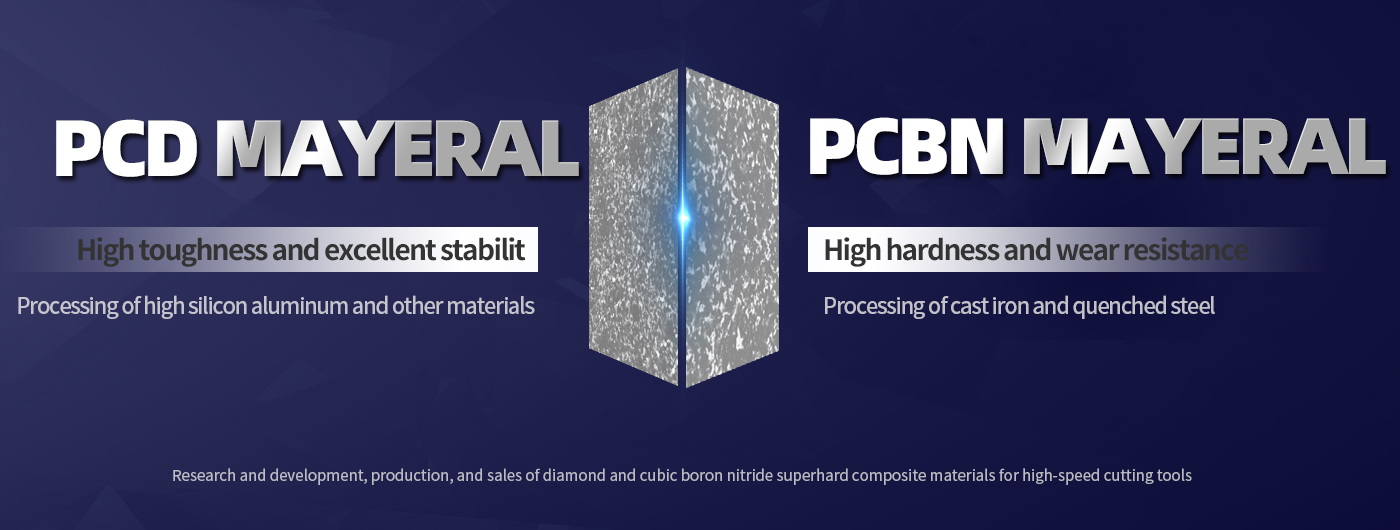Discussion on the Main Properties of PCBN Tool Materials
更新时间:2021-06-05 关注:1015
Because both CBN crystal and diamond crystal belong to sphalerite type, with similar lattice constants and the same chemical bond type, CBN has hardness and compressive strength similar to that of diamond, and because it is composed of N and B atoms, it has higher thermal stability and chemical inertia than diamond. PCBN is applied in various fields of cutting processing with its superior cutting performance, especially in the cutting of high hardness materials and difficult to machine materials. The main properties of PCBN tool material are as follows:
(1) It has high hardness and wear resistance. The microhardness of CBN single crystal is HV8000~9000, which is currently known as the second highest hardness material. The hardness of PCBN composite sheets is generally HV3000~5000. Therefore, when used to process high hardness materials, it has higher wear resistance than hard alloys and ceramics, which can reduce size deviation or dispersion in large parts processing. It is especially suitable for equipment with high automation level, and can reduce the auxiliary time for tool change and adjustment, so as to fully utilize its efficiency (2) It has high thermal stability and high-temperature hardness. The heat resistance of CBN can reach 1400~1500 ℃, and the hardness at 800 ℃ is the room temperature hardness of Al2O3/TiC ceramics. Therefore, when the cutting temperature is high, it will soften the processed material and increase the hardness difference with the tool, which is conducive to cutting processing and has little impact on the tool life
(3) has high chemical stability. CBN has a very high antioxidant capacity. It does not produce oxidation at 1000 ℃, and does not react chemically with iron based materials at 1200~1300 ℃. However, it will produce hydrolysis with water at about 1000 ℃, causing a large number of CBN to be worn. Therefore, attention should be paid to the type of cutting fluid when using PCBN tools for wet cutting. In general, wet cutting does not significantly improve the lifespan of PCBN tools, so dry cutting is often used when using PCBN tools (4) has good thermal conductivity. The thermal conductivity of CBN material is lower than that of diamond but much higher than that of hard alloy, and as the cutting temperature increases, the thermal conductivity of PCBN tool continuously increases, which can quickly transfer heat from the tool tip, which is beneficial for improving the machining accuracy of the workpiece
(5) has a lower coefficient of friction. The friction coefficient between CBN and different materials ranges from 0.1 to 0.3, which is significantly lower than the friction coefficient of hard alloys (0.4 to 0.6), and slightly decreases with increasing friction speed and positive pressure. Therefore, the low friction coefficient and excellent anti bonding ability make it difficult for CBN tools to form retention layers or chip deposits during cutting, which is beneficial for improving the surface quality of machining
-
Next:None




